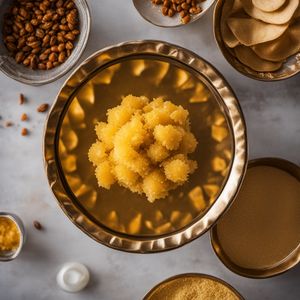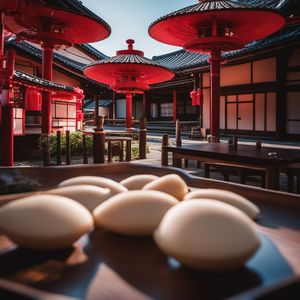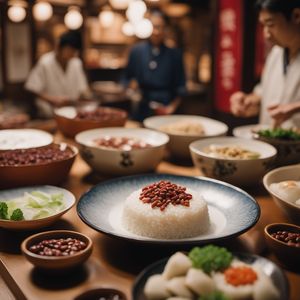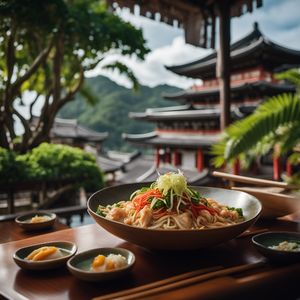
Dish
Konpeitō
Konpeito
The crystals are then coated with a layer of syrup and allowed to dry. Konpeitō comes in a variety of colors and flavors, including strawberry, lemon, and grape.
Origins and history
Konpeitō has been a popular candy in Japan since the 16th century. It was originally brought to Japan by Portuguese traders, who called it confeito. The candy became popular among the Japanese aristocracy, and was often given as a gift or used as a decoration for special occasions.
Dietary considerations
Konpeitō is a high-sugar food and should be consumed in moderation. It is not suitable for diabetics or those on a low-sugar diet. It may contain allergens such as soy or nuts, depending on the flavor and brand.
Variations
Variations of Konpeitō include using different flavors and colors, and incorporating other ingredients such as matcha or dried fruit. Some modern variations also include fillings such as chocolate or cream.
Presentation and garnishing
When making Konpeitō, be patient and take your time. The candy crystals can take several hours to form, and require constant attention to prevent burning. Store Konpeitō in an airtight container to prevent it from becoming sticky. To use Konpeitō as a decoration, arrange the crystals in a visually appealing pattern or use them to create a specific shape or design.
Tips & Tricks
Konpeitō is a delicate candy and can easily break or chip. Handle it with care when serving or using as a decoration. If the crystals become sticky or clump together, place them in a bowl with a small amount of cornstarch and gently toss to coat.
Side-dishes
Konpeitō is often served as a standalone snack or used as a decoration for cakes and pastries. It pairs well with green tea or a light, fruity white wine. Some traditional Japanese desserts, such as wagashi, also incorporate Konpeitō as an ingredient.
Drink pairings
Konpeitō is typically presented in a small dish or jar. It can be garnished with fresh fruit or a sprig of mint. It pairs well with green tea or a light, fruity white wine.
Delicious Konpeitō recipes
More dishes from this category... Browse all »

Aamras
Indian cuisine

Aasmi
Indian cuisine

Agra petha
Indian cuisine

Aiyùbīng
Taiwanese cuisine

Ajdnek
Slovenian cuisine

Akafuku
Japanese cuisine

Akanés
Greek cuisine

Akumaki
Japanese cuisine




